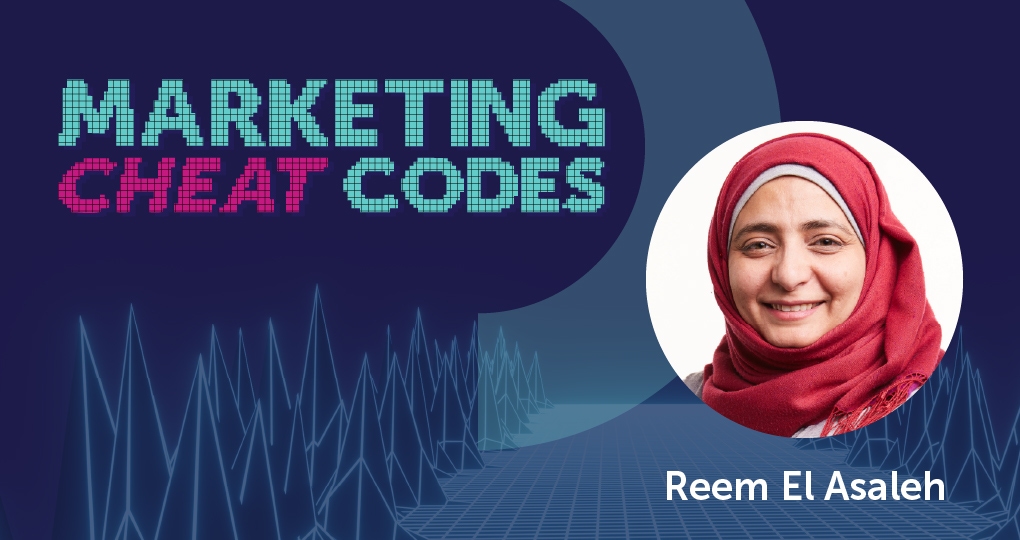Dr. Reem El Asaleh is an Associate Professor and Department Chair at Ryerson University in Toronto. Reem sets her students up to succeed by providing an intensive, 12-week course that takes a holistic approach to DAM education.
From vendor selection to customer use cases and IT infrastructure, her students learn by doing the work and building a DAM from the ground up. In this podcast, Reem shares her favorite classroom highlights; how mastering metadata can be a lightbulb moment for her students, and how thinking like a student helps her stay current and better prepare the future of the DAM workforce.
Skip to Topic:
- Diving into DAM for the First Time: A Student’s Approach
- How to Think About the End-User When Building a DAM
- Gaining Organizational Buy-In When Building a DAM
- Common Pain Points for DAM Beginners
- Future Insights: The Future of DAM from the Perspective of a Teacher
- Growth Mindset: Adapting a Good Student’s Method of Learning Something New
5:40 – Diving into DAM for the First Time: A Student’s Approach
How do new students grasp digital asset management for the first time? Reem is a big proponent of learning by doing, which is a good case study for businesses looking to implement a DAM effectively. In addition, having organizational buy-in from multiple departments and using the techniques she outlines helps ensure that everyone involved is learning, growing, and building these foundational tools together.
“In the lecture, we take it one step at a time, introducing them to all the fundamental aspects of digital asset management from the definition to metadata to taxonomy. Next, I take that information and employ that knowledge to actually learn by doing. We really enforce and embrace the importance of learning by doing.
In the lab, we actually use that knowledge and ask them to build their own digital asset management for an imaginary company. They do everything from the back end to the front end, and that’s what’s unique about the course that we’re doing. Students get so excited because they have to do this by their hand. They also have to evaluate their peer’s DAM as part of the assignment. Each student in each group has to evaluate their peer’s DAM and build a marketing campaign. So, I’m bringing back that creative background and building the marketing campaigns.”
10:32 – How to Think About the End-User When Building a DAM
When you’re building a DAM, you should always consider the end-user, those people that will search for and use these assets on a daily basis. But how do you approach this end goal when you’re first getting into DAM? What are the things you need to keep in mind?
“During the course, I’m trying to bring students into two different points. They have to think about the structure from a vendor perspective like they are an employee with a DAM vendor. How are they going to think about the client? What are the questions that they have to go through in order to understand the client?
We learned from the user perspective if you are a user in a company who’s looking for a DAM before you go to a vendor, what are the questions that you need to think about it? How do you think about that? We are actually teaching DAM from two perspectives at the same time, that of the vendor and that of the company you’re working for.”
12:12 – Gaining Organizational Buy-In When Building a DAM
Building a DAM correctly from the ground up is only half the battle. Many people go into a DAM without gaining organizational buy-in or change management from key members of their organization who will be adding to this machine. If done incorrectly, it doesn’t matter if you have a DAM master managing the system; cracks will start to form from other people using the DAM incorrectly or not at all.
“They have to learn about the ID and understand the terms, even though they don’t come from a technical background. But they do need to understand or at least become familiar with those steps, and yes, they have to learn about the business management adaptation because they may end up being a DAM manager who will actually bring this new technology, and then there will be some employees who will have hesitations.”
14:11 – Common Pain Points for DAM Beginners
There are always areas that people commonly struggle with when learning a new tool. Reem offers insight into her experience, citing metadata as the one aspect that students struggle with the most.
“Metadata is everyone’s struggle, right? It’s easy to understand, but it’s a little bit difficult to understand at the same time. It takes them a while until they understand exactly the value of metadata and how it’s going to relate to DAM.
We start with the lecture fundamentals, then we do some hands-on activities. I use toys, and candies, then ask them to build their own taxonomy with Legos, for example. Then we talk about keywording and the selection of the keywording, and then what keyword can belong to the metadata.
And then, we talk about metadata methodology. So, when they select their metadata, they have to think about the objective, who the user is going to be, and how much is enough. I always ask them to select only 15 metadata fields. So, they must think about what the most important metadata field is to add there.”
18:38 – Future Insights: The Future of DAM from the Perspective of a Teacher
DAM is constantly in a state of evolution, shifting with the needs of every industry it serves. It’s important to keep in mind the flow of these changes to better prepare yourself and your business for the future of DAM. One key thing to keep in mind is automation. Every tool we use is starting to implement automation in some form or another. DAM is no different. One of the key differentiators that people look for in a DAM is auto-tagging.
“DAM technology is always evolving. So, the previous year we didn’t talk about the implementation of A.I. in DAM. I touched base on the A.I. integration into digital asset management, but I would love to focus more on this area as the future and the industry.
So, this is something that I would like to continue focusing on, the adaptation of metadata. DAM is always evolving the automation process.”
22:58 – Growth Mindset: Adapting a Good Student’s Method of Learning Something New
Are there some characteristics that you see in students that make them great learners?
“Its students who always love learning and people who always love to be on top of what is new. One of the things that helped me a lot on my journey with digital asset management is attending as many events, webinars, courses, etc. because before I knew any issue at all, before I knew anything, I actually went in every year to look for different books, event, vendor websites, and blogs.
I try to connect with these people too. Every year I discover something new. So, I almost register for every single event, every single course, anything that is available online, I take it.
Be visible, be connected, learn more, read more. That’s just always going to help.”
Key Takeaways
Sometimes having an expert’s approach isn’t the way to go. DAM requires a level of flexibility since it’s constantly changing. Reem connects with students using a hands-on approach that comes from a real-world application.
When building a DAM, keep these tips in mind, especially if you’re working with a team to build it from the ground up.
Want more exciting marketing tips and tricks? Never miss out again! Signup to receive updates on the latest Cheat Codes episodes!


